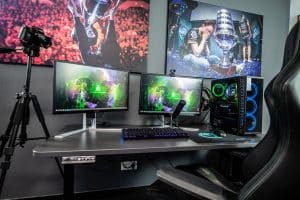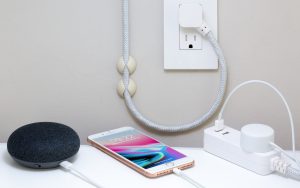Liquid Crystal Display (LCD) monitors have become a standard in the digital world, and they come in various types. The most common LCD types are In-Plane Switching (IPS), Vertical Alignment (VA), and Twisted Nematic (TN). Each type has its own advantages and disadvantages, and this article will compare the three types to help you make an informed decision when purchasing a monitor.
IPS Displays
IPS displays offer excellent color reproduction, wide viewing angles, and a high level of color accuracy. This makes them the best choice for tasks that require accurate color representation, such as photo editing and graphic design. IPS displays are known for their ability to display deep black levels, making them an excellent choice for gaming and watching movies.
VA Displays
VA displays offer the best contrast ratio of the three LCD types, which makes them ideal for watching movies and gaming. They have a slower response time than TN and IPS displays, which can lead to ghosting or motion blur. However, some VA displays have a feature called “overdrive,” which can reduce this issue by increasing the display’s response time.
TN Displays
TN displays are the most common LCD type and are often used in budget monitors. They have the fastest response time of the three LCD types, which makes them ideal for gaming. However, they have poor viewing angles and color accuracy when compared to IPS and VA displays. This makes them less suitable for tasks that require accurate color representation.
Resolution
The resolution of a monitor is an essential factor to consider when purchasing a monitor. Higher resolutions offer more screen real estate and crisper image quality. However, higher resolutions require more powerful hardware to drive the display, which can increase the cost of the monitor. The most common resolutions for monitors are 1080p, 1440p, and 4K. 1080p is suitable for budget monitors and gaming, while 1440p and 4K are ideal for productivity tasks such as photo editing and video production.
Refresh Rate
The refresh rate of a monitor is the number of times the display updates per second. Higher refresh rates offer smoother motion and reduce motion blur, making them ideal for gaming. The most common refresh rates for monitors are 60Hz, 120Hz, and 144Hz. 60Hz is suitable for budget monitors, while 120Hz and 144Hz are ideal for gaming.
Panel Uniformity
Panel uniformity refers to how evenly the display shows colors and brightness across the entire screen. IPS displays are known for having the best panel uniformity, while VA displays can suffer from backlight bleed. TN displays can suffer from color and brightness shifts when viewed from different angles.
Price
Price is an important factor to consider when purchasing a monitor. The price of a monitor can vary greatly depending on the LCD type, resolution, refresh rate, and other features. TN displays are generally the most affordable, making them an excellent choice for budget monitors. IPS displays are more expensive than TN displays, but they offer better color accuracy and wider viewing angles. VA displays are somewhere in between TN and IPS displays in terms of price.
Conclusion
When it comes to purchasing a monitor, there are many factors to consider, including the LCD type, resolution, refresh rate, and panel uniformity. IPS displays are best for tasks that require accurate color representation, while VA displays are ideal for watching movies and gaming. TN displays are the most common and are ideal for budget monitors and gaming. When choosing a monitor, it’s essential to consider your needs and budget and choose a monitor that meets your requirements.
Looking for an electronic products guide? Visit TechnoQia for comprehensive reviews and buyer’s guides on the latest electronics available on Amazon. Whether you’re a tech enthusiast or novice, TechnoQia’s expertly researched articles will help you make an informed decision when purchasing electronic products. Start exploring the latest trends in electronics today at TechnoQia!





